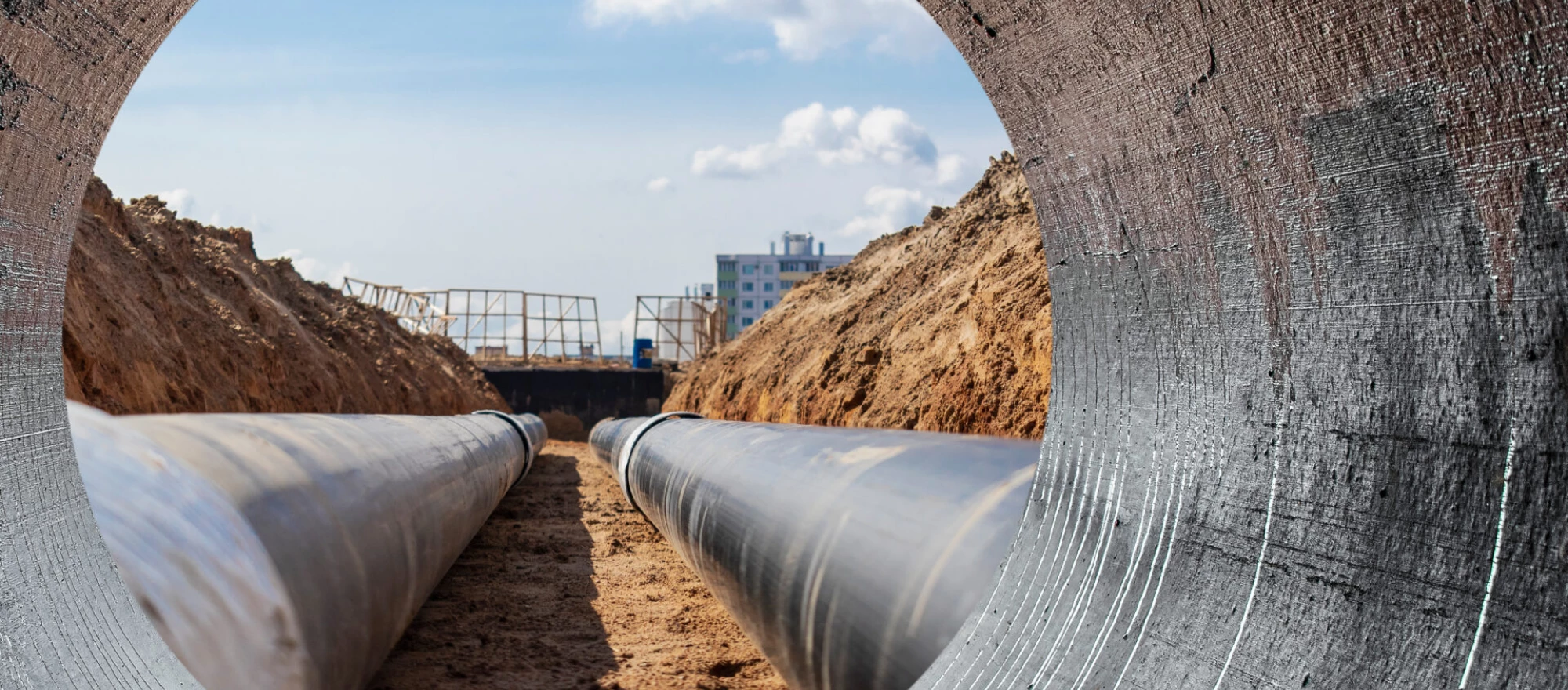Heat networks?
But what is a heat network and how does it work?
According to the Flemish Energy Regulator (VREG) a heat network is “the whole of interconnected pipes and their connected tool who are necessary for the heating of cities.”. The heating of cities is defined as “the distribution of thermal energy in the form of steam or hot water from a central production installation via a network that is connected to multiple buildings or locations for the heating of spaces and/or supporting industrial processes”.
The main components of a heat network are the energy plant connected to a heat source (one or multiple), heat pipes (responsible for transporting warm and cooled off water), the indirect heat delivery station (responsible for adjusting the temperature of the water before it enters the central heating or plumbing of the building) and the heat meter (responsible for converting the flow rate of water and the temperature difference into an amount of kWh).
In simple terms instead of relying on individual boilers powered by natural gas or electricity, companies, public buildings and large groups of households connect to an energy plant via a heat network. The energy plant uses either residual heat from industrial processes (cooling installations, incinerators, …) or geothermal heat to raise the temperature of water to 90°. The heated water will then be sent to connected buildings via the (usually) underground pipes of the heat network. The heated water or the heat coming from the heat network can be used for central heating, cooking and sanitation. Once the heat from the water is consumed in the buildings the cooled down water (60°) will be send back to the energy plant to be reheated thus creating a sustainable loop.
 Sustainable?
Sustainable?
But where does all this heat come from and is this heat sustainable?
At this moment not all energy plants are using sustainable sources to heat the water, in some instances a temporary gas installation was built in order to guarantee the heat supply. The goal remains to only use sustainable heat sources in the future. Two sustainable heat sources to highlight are (deep or shallow) geothermy and aquathermy, both can be utilized in Belgium. When it comes to deep geothermal heat, the only viable spot can be found in Limburg (near the border with the Netherlands). For aquathermy a lot of different sources can be used to heat up or cool the water of the heat network. These different sources consist of surface waters (rivers, lakes, …), sewer water and drinking water.
The benefits and challenges of a heat network?
Now that we have explored the workings of heat networks it is necessary to look at the benefits and challenges connected to heat networks.
Heat networks have several distinct benefits:
One of the main benefits of heat networks is that they can use a variety of energy sources, including renewable energy sources such as solar and/or geothermal.
Heat networks have a higher level of efficiency compared to traditional heating systems, as they are able to capture and distribute the heat that would otherwise be wasted in a traditional system.
It is a safer option than natural gas because there is no risk of explosion or CO poisoning.
Maintenance of the network is centralized with no consumer responsibility.
Consumers don't need to worry about the Capacity Tariff (unlike with electrical heating). For further details about Captar please consult this article here.
Like all new technologies heat networks also have their set of challenges:
One of the challenges of implementing heat networks in Belgium is the high upfront costs of building the infrastructure. Heat networks also require lots of planning, financing, and dialogue with various parties (contractors, industry, local and regional government, …).
Heat networks are not a one size fits all solution when it comes to sustainable heating. It requires the right heat source and the appropriate heat demanders for it to work properly.
Designing heat networks is complex when taking into account the right temperatures (high, medium, and low heat) for the right use and need. This challenge becomes even bigger due to the recent shift from singular heat sources (for example a waste management plant) to more diverse sources of heat.
Conclusion
Overall, heat networks are a promising solution for providing heating and hot water to buildings in a more efficient and sustainable manner. With the right policies and investments, heat networks have the potential to play a significant role in Belgium’s transition to a low-carbon economy.
With our previous experience in energy transition projects, we at Trilations are ready to ensure our clients have the right processes in place to also make this next transition a success.





